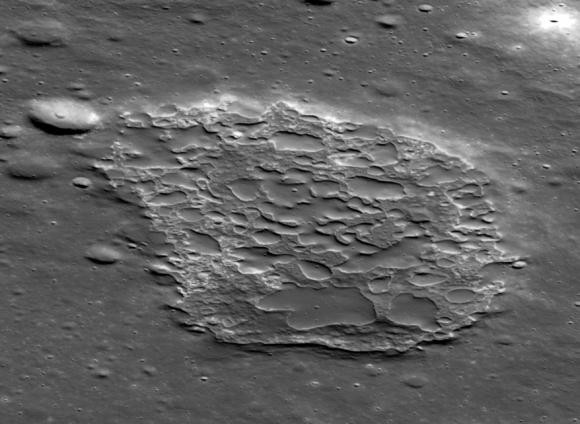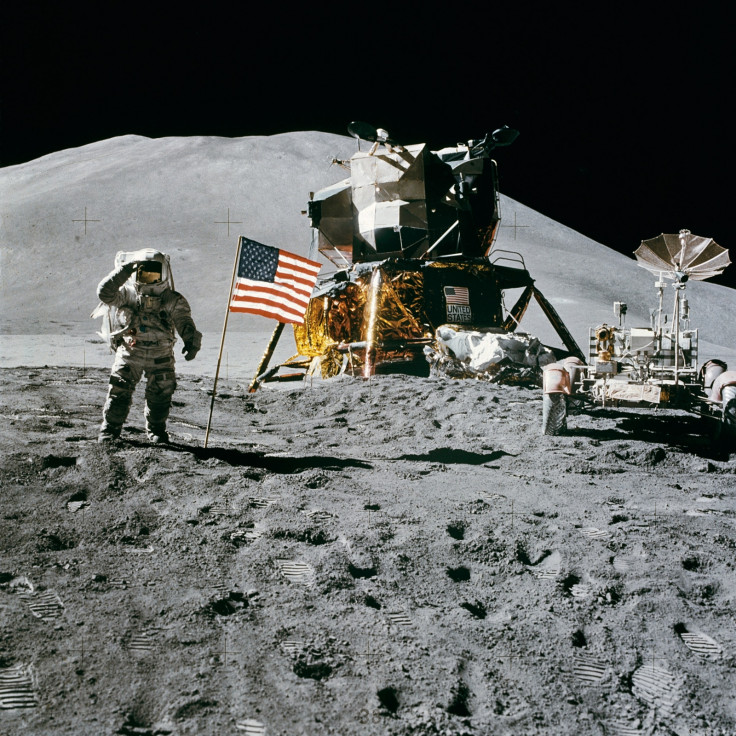Mysterious moon volcano Ina is billions of years older than previous thought
Ina is the result of an eruption 3.5 billion years ago.

An enigmatic volcanic caldera on the Moon, known as Ina, is said to have formed within the past 100 million years of lunar history – an extremely young age for volcanism on the Moon. However, a new study has contested this view, revealing that it may not be that young after all.
When the crew of Apollo 15 – the fourth mission to land on the Moon – orbited Earth's natural satellite in 1971, they photographed a strange feature geological feature on its surface.
The bumpy, D-shaped depression is a volcanic caldera two miles long and a mile wide. Scientists are also unsure about when it first emerged on the Moon.
Several of Ina's features suggest that it is relatively young. The caldera is bright compared to its the flanks of the volcano, a sign that it hasn't had time to accumulate as much rocks and dust over time.
Furthermore, the mounds within Ina's caldera appear to have sustained fewer crater impact than their surroundings, another indication of its youth.
Looking at all this evidence, the scientists have said that Ina represents a volcanic eruption that took place sometime in the last 100 million years. This is puzzling because it would mean that an eruption took place a billion years or so after the end of all other known volcanic activity on the Moon.
In a study now published in the journal Geology, a team led by researchers Brown University has attempted to solve this mystery, showing that it is more likely that Ina formed around 3.5 billion years ago, at a time of intense volcanic activity.
A parallel with Earth's volcanoes
Ina is many ways similar to the Kilauea volcano in Hawaii. It appear to be a pit crater on a shield volcano – just like the Kilauea Iki crater, which erupted in 1959. The scientists decided to learn about the volcano on Earth and see how this knowledge could apply to Ina on the Moon.
The reason why Ina appears to be young, they find, is that the structures within the caldera are really porous.
When the Kilauea Iki crater erupted, the last lava to come out erupted as "magmatic foam" – a bubbly mixture of lava and gas. When this foam cooled and solidified, it formed a highly porous surface. A similar phenomenon might have happened on the Moon, with the Ina eruption also producing magmatic foam.
Due to the Moon's decreased gravity and nearly absent atmosphere, the lunar foam would have been even fluffier than on Earth, so it's not surprising that the structures within Ina are even more porous than on Earth.

The high porosity of the surfaces within the caldera have the potential to throw off date estimates for Ina, both by hiding the buildup of rocks and dust, and by making crater counts harder.
The scientists come up with a model of how exactly such porous surfaces affect Ina's appearance. They find that it would reduce by a factor of three the size of craters on Ina's mounds. In other words, a 100-foot-diameter crater in lunar basalt bedrock would only appear as a smaller crater 30 feet in Ina's foam deposit.
Using these data, the team estimated a revised age for Ina's caldera of about 3.5 billion year old. That's similar to the flanks of the volcano that surrounds Ina.
"As interesting as it would be for Ina to have formed in the recent geologic past, we just don't think that's the case," said Jim Head, co-author of the paper and professor in Brown's Department of Earth, Environmental and Planetary Sciences. "The model we've developed for Ina's formation puts it firmly within the period of peak volcanic activity on the Moon several billion years ago."
These findings provide a plausible explanation as to why the caldera looks so young when its surroundings are older, and suggest there was no puzzling billion-year pause in volcanic activity as previous investigations about Ina had previously suggested.
© Copyright IBTimes 2025. All rights reserved.






















